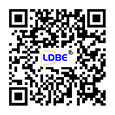Measurement of narrow linewidth for laser diode
Time:2023-10-18
Views:357
Although both spectrum and spectrum are electromagnetic spectra, the analysis methods and testing instruments of spectrum and spectrum are quite different because of the difference of frequency. Some problems are difficult to solve in the optical domain, but it is easier to solve them by frequency conversion to the electrical domain.
For example, the spectrometer using scanning diffraction grating as frequency selective filter is the most widely used in commercial spectrometers at present. Its wavelength scanning range is wide (1 micron) and dynamic range is large (more than 60 dB). However, the wavelength resolution is limited to about a dozen picometers (>1 GHz). It is impossible to directly measure the laser spectrum with a line width of megahertz using such a spectrometer. At present, DFB and DBR are impossible. The linewidth of semiconductor lasers is in the order of 10MHz, and the linewidth of fiber lasers can be lower than the order of kilohertz by using external cavity technology. It is very difficult to further improve the resolution bandwidth of spectrometers and realize the spectral analysis of extremely narrow linewidth lasers. However, this problem can be easily solved by optical heterodyne.
At present, both Agilent and R&S companies have spectrographs with resolution bandwidth of 10 Hz. Real-time spectrographs can also improve the resolution to 0.1 MHz. In theory, optical heterodyne technology can be used to solve the problem of measuring and analyzing millihertz linewidth laser spectra. The development history of optical heterodyne spectroscopy analysis technology is reviewed, whether it is double-beam optical heterodyne method or single-beam optical heterodyne method for DFB lasers. The time-delay white heterodyne method of tuned lasers and the accurate measurement of narrow spectral linewidth are all realized by spectrum analysis. The spectrum of the optical domain is moved to the medium frequency domain which is easy to handle by optical heterodyne technology. The resolution of the electric domain spectrum analyzer can easily reach the order of kilohertz or even hertz. For the high frequency spectrum analyzer, the highest resolution has reached 0.1 mHz, so it is easy to solve. The measurement and analysis of narrow linewidth laser spectroscopy, which is a problem that can not be solved by direct spectral analysis, greatly improves the accuracy of spectral analysis.
Applications of narrow linewidth lasers:
1. Optical Fiber Sensor for Petroleum Pipeline;
2. Acoustic Sensors and Hydrophones;
3. Lidar, Ranging and Remote Sensing;
4. Coherent optical communication;
5. Laser Spectroscopy and Atmospheric Absorption Measurement;
6. Laser seed source.
For example, the spectrometer using scanning diffraction grating as frequency selective filter is the most widely used in commercial spectrometers at present. Its wavelength scanning range is wide (1 micron) and dynamic range is large (more than 60 dB). However, the wavelength resolution is limited to about a dozen picometers (>1 GHz). It is impossible to directly measure the laser spectrum with a line width of megahertz using such a spectrometer. At present, DFB and DBR are impossible. The linewidth of semiconductor lasers is in the order of 10MHz, and the linewidth of fiber lasers can be lower than the order of kilohertz by using external cavity technology. It is very difficult to further improve the resolution bandwidth of spectrometers and realize the spectral analysis of extremely narrow linewidth lasers. However, this problem can be easily solved by optical heterodyne.
At present, both Agilent and R&S companies have spectrographs with resolution bandwidth of 10 Hz. Real-time spectrographs can also improve the resolution to 0.1 MHz. In theory, optical heterodyne technology can be used to solve the problem of measuring and analyzing millihertz linewidth laser spectra. The development history of optical heterodyne spectroscopy analysis technology is reviewed, whether it is double-beam optical heterodyne method or single-beam optical heterodyne method for DFB lasers. The time-delay white heterodyne method of tuned lasers and the accurate measurement of narrow spectral linewidth are all realized by spectrum analysis. The spectrum of the optical domain is moved to the medium frequency domain which is easy to handle by optical heterodyne technology. The resolution of the electric domain spectrum analyzer can easily reach the order of kilohertz or even hertz. For the high frequency spectrum analyzer, the highest resolution has reached 0.1 mHz, so it is easy to solve. The measurement and analysis of narrow linewidth laser spectroscopy, which is a problem that can not be solved by direct spectral analysis, greatly improves the accuracy of spectral analysis.
Applications of narrow linewidth lasers:
1. Optical Fiber Sensor for Petroleum Pipeline;
2. Acoustic Sensors and Hydrophones;
3. Lidar, Ranging and Remote Sensing;
4. Coherent optical communication;
5. Laser Spectroscopy and Atmospheric Absorption Measurement;
6. Laser seed source.







